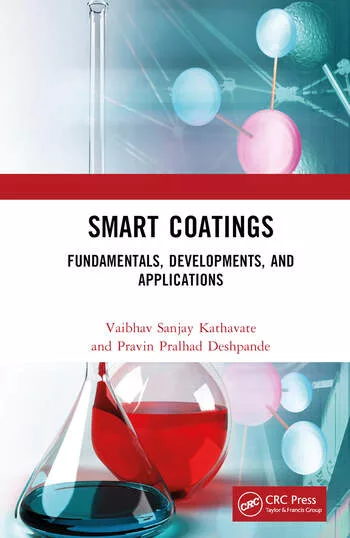A DUAL CASE STUDY
Reducing Supply-Chain Incidents and Lowering Surcharges with ‘Smart' Packaging
Five boxes of tuxedos are ruined at an express courier's sort center when paint cans leak from an adjacent package on a conveyer belt. Combustible solvents, not labeled as dangerous goods, reach a flash point as first responders approach an overturned tractor-trailer on fire. Several pails of formaldehyde are accidentally dropped in a university storage room, sending two workers to the hospital and prompting the evacuation of 300 students and faculty.
Although catastrophic events involving the transportation of dangerous goods are thankfully rather rare, less-severe incidents can cause personal injury, significant delays, much inconvenience and needless expense. Ironically, most supply-chain occurrences are avoidable when shippers comply with prescribed government regulations and supplier packing instructions and sometimes use a little "TLC," common sense and packaging beyond that required by law.
Coatings manufacturers and formulators are especially vulnerable to supply-chain spills and resulting damages. Because most architectural coating products are shipped via ground, using express couriers and over-the-road freight carriers, they often encounter rough conditions en route to warehouses and retail outlets. Usually packaged in metal cans, friction-sealed with lids, and juxtaposed in cardboard boxes, paints are particularly prone to mishaps.
This non-technical case study highlights a major express courier's encounters regarding paint-related incidents and damages at a sorting center near a major international airport. It also explores a small packager's perspective, one who ships 90% of dangerous goods by air, and many gallon-sized paint cans. Both perspectives lend credence that using inexpensive packaging accessories can reduce incidents and related costs.

Where Business is Going
Purolator Courier Ltd., based in Mississauga, ON, is Canada's leading overnight courier company, with some 12,500 employees handing 1.1 million pieces daily, 275 million annually. Seventy percent comprise manufactured goods, or non documents. The main hub (sort center) near Toronto's Pearson International Airport moves nearly half of Purolator's total Canadian package volume. David R. Evans, manager of dangerous goods, is also head of damage claims under the auspices of the company's Security and Regulatory Affairs Department. Purolator initiated this specialty group of highly trained personnel in early 2005 as a proactive effort to identify solutions to transportation damage and cleanup mitigation at the sort center. In addition, the dedicated department may reward contract customers with lower surcharges for using packaging that exceeds regulatory requirements. Although Purolator moves 200 tons of air freight across Canada nightly, incidents involving dangerous goods for air transport are uncommon.
"With 250-300 trailers arriving at the hub daily, nearly a half-million packages move from large trailers to conveyers, then onto smaller trucks and cargo planes, in a very short period of time," says Evans. "Although we're fortunate to have state-of-the-art equipment, and our material handlers adhere to best practices during loading and unloading, with that kind of volume there is going to be a certain number of bumps and bruises," he admitted. He went on to stress that if shippers paid more attention to packaging regulations, packing instructions and good common sense, the majority of incidents at the sort center would never happen.
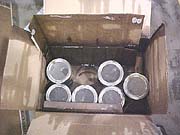
What Makes Coatings Dangerous
Materials capable of posing an unreasonable risk to health, safety and property when transported in commerce are considered "dangerous" in Canada or "hazardous" in the United States. Properly declared lacquer-based paints, enamels, varnishes, polishes and others (e.g., thinners, reducing compounds) are only a part of what government regulations classify as flammable liquids. Quantification stems from a liquid's flash point, the temperature at which spontaneous combustion takes place. Other dangerous goods' classes include explosives, pressurized gases, infectious substances and corrosives, to name a few. All dangerous goods that are transported through commerce must be packaged and labeled, documented (bill of lading), placarded (for bulk transport) and handled by trained personnel in compliance with government regulations. Even truck drivers in possession of a commercial driver's license who transport dangerous goods must have a special CDL endorsement. Essentially, all dangerous goods packaging, shipping and handling, from consignor to consignee, is highly regulated for safe carriage.
Declared dangerous goods (DGs) at Purolator's sort center account for about 300,000 packages annually, or 4,000 daily. Exempt from the conveyor system, they are moved and positioned by hand, and occupy a stowage area segregated from mainstream packages. Twenty-four hours here is considered a ‘long time.'
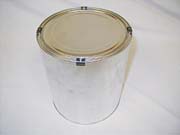
DG Transportation 101:
Who Regulates What
Based upon UN recommendations, Transport Canada's Transportation of Dangerous Goods Regulations (TDGRs) are sometimes referred to as "Clear Language." They are similar to the US DOT's hazardous-materials regulations (HMRs) included in Title 49 CFR (Code of Federal Regulations), Parts 100 through 185. Inherent regulatory similarities promote reciprocity for DG shipments in either direction. Regulating packaging, labeling, placarding and employee training, both regulation sets apply to dangerous goods shipped commercially via highway and rail (i.e., ground transport). Other international agencies and organizations regulate dangerous goods' shipments via air and seaway. For example, the International Air Transport Association (IATA) regulates air shipments, based on the International Civil Aviation Organization's (ICAO) Technical Instructions. Additionally, the International Maritime Organization (IMO) uses its International Maritime Dangerous Goods (IMDG) Code to regulate the transportation of dangerous goods by sea. As one might expect, inter-modal compliance similarities outweigh the differences.
In general, the vast majority of dangerous goods packaged in accordance with regulatory requirements and supplier recommendations sustain none or minimal damage during normal transport conditions. It's the minority of DG packaging, combined with non-regulated packaging, which presents special problems for coatings during shipment.

Dangerous or Not:
Paints Can ‘Leak Havoc'
In preparation for transport, a single container (normally, a can) may be one of several, stacked and enclosed in a fiberboard box. In the context of shipping dangerous goods, this configuration depicts a UN-certified "combination package." Combination packaging incorporates at least one single container, combined with an outer package. They must meet regulatory (UN specifications) and independent testing protocols (ISTA, International Safe Transit Authority), which exceed real-world conditions. Despite single-container pressure-testing requirements (normally, 95 kPa or 15 psi) and the combined-package integrity, the friction seal at the can's lid remains its weakest point. Consequently, it's vulnerable to rough handling, load shifts and accidental abuse during transit. Non-regulated paint containers are even more subject to damage and leakage.
The majority of paints shipped in North America daily are not considered dangerous, and therefore, not regulated for shipment. Most latex-based paints are neither flammable nor corrosive, unlike their lacquer and varnish cousins. They can, however, wreak havoc on peripheral goods during transport, sometimes causing more damage and inconvenience than their regulated counterparts.
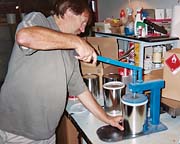
Leaks Cause Delays and Cost Big Bucks
When paint leaks become apparent at the sort center, Purolator gives mitigation and cleanup a priority. If leaks are not immediately addressed, they'll only get worse, causing collateral damage to nearby packages and equipment, not to mention potential peril to workers. Spill incidents at the sort center can sometimes cause conveyer-belt shutdowns and significant delays. Packages must be removed, inspected and sometimes repackaged. Belts and floors must be cleaned before returning to operational status. This takes valuable time and can result in significant costs.
Very different from the egregious is the covert. Leaks can sometimes remain hidden during commercial transportation. Unless opened for inspection, these packages often arrive at their retail destinations. Once opened, the affected containers are declared a loss because they cannot be sold at a normal price. This scenario will sometimes prompt a damage/loss claim by the consignee.
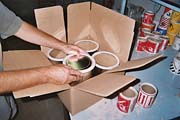
DG Surcharges: Cost of Doing Business
Paints (lacquers, enamels, etc.) are usually classified as flammable liquids, Class 3, assigned ‘UN 1263.' Others may be classified as "paint-related materials" (paint-thinning or reducing compounds), a corrosive, Class 8, assigned ‘UN 3066.' The potential for fire and skin damage are valid reasons why certain liquids and solids are classified as dangerous goods in Canada and hazardous materials in the United States.Some coatings are classified both flammable and corrosive. In this case, the TDGRs and the HMRs require primary and secondary hazard designations. The primary hazard is considered more potentially harmful to human or animal life, and to the environment. A secondary hazard classification, however, should not be taken lightly. It should be viewed as "less harmful," relative to the primary hazard, but still potentially dangerous.
Because of the potential for danger and damage, downtime and cleanup costs, additional insurance premiums, special handling, and the hidden perils of undeclared DGs, Purolator imposes a surcharge to contract accounts for declared DG shipments. For example, a typical surcharge for a Class 3-labeled package containing four, one-gallon cans of varnish, shipped from Toronto to Vancouver, is $35 (Canadian funds). A surcharge also applies to U.S.-bound DG shipments, via land and air transport. The surcharges are intended to cover the inherent risks and expenses associated with paint spills and other DG incidents.
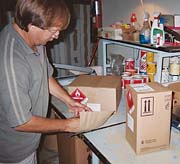
‘Smart' Packaging Solutions Pay Dividends
"The majority of all leaks are caused by poor packaging or undeclared dangerous goods," according to Evans. Instead of being hand carried with TLC and segregated, they (undeclared DGs) face the automated conveyor system. "Many paint cans never see a clip or Ringlock®-type device," he added. However, he qualified that statement by excluding contract paint suppliers.Evans feels very strongly that proper packaging is key with coatings, even non-regulated shipments. Choosing a strong outer package, with inner separators or padded cushioning, works wonders to prevent spills. Purolator's walk-in retail center offers several options to ensure safe-paint transport, as well as trained dangerous goods personnel to offer advice. Using a Ringlock-type device and clips is strongly advised to substantially reduce the chances of a can's lid breach during transit. One may also use additional solutions to mitigate spills and damage, such as leak-proof liner bags, foam inserts and vermiculite (either bulk or packets). These, and other solutions, are usually required for air shipments.
Purolator's large contract accounts act as shining examples for ‘smart' packaging solutions. Regulated paints or not, the vast majority use clips or Ringloks to secure can lids. Clips are less expensive, costing about a dime each. Typically, a gallon paint can will use 4-6 clips. Ringlocks, costing about $1.25 per gallon can, provide maximum lid security, albeit more expensive. They can be applied by hand, with a rubber mallet, or with a mechanical device, in a matter of seconds. Ringlocks for quart cans are also readily available.
‘Smart' Packaging Helps Save Time and Money
As an incentive for employing best practices, Purolator can reduce the surcharge for contract accounts who use clips or Ringloks. For shippers who ship thousands of declared paints monthly, this can be significant.Purolator, however, goes much beyond the monetary approach. Dave Evans' staff provides training for approximately 300 employees annually. In a classroom setting, ground and air shipping regulations are covered, as well as best practices. In addition, three full-time quality-assurance staff visit customers regularly to evaluate current dangerous goods' packaging and shipping procedures. They then offer cost-effective solutions to help reduce logistical incidents and shipping costs. Among these suggestions are using clips and Ringloks, foam-pack inners, vermiculite, and liner bags, to name a few. Others include the obvious, like paying attention to the manufacturer's packing instructions.
"In 15+ years in this business, I have seen very few paint can leaks that had clips or a Ringlok device," concluded Evans. To him, using these inexpensive accessories is good common sense, and he wishes more shippers would do the same. Doing it right the first time can pay big dividends throughout the logistical chain, including his ‘chain links' at Purolator.
Dangerous Goods by Air: Time-Critical Shipments
Since 1989, Dangerous Goods Packaging and Shipping Services, Ltd., also based in Mississauga, Ontario, has been classifying, packaging, labeling, wrapping and signing shipping documents for its clients. In short, DGPSS takes on full-shipping responsibility as a dangerous goods expert, functioning as an "outsourced consignor." Ninety percent of their customers' packages ship via air and 98% are dangerous goods. Douglas Monette, the company's founder and chief consultant, takes a "hands-on" approach to packaging-related DG solutions for customers in virtually all industries, where next-day delivery is crucial. He targets the coatings industry because his personal packaging philosophy of ‘doing it right the first time' is a perfect fit with these time-sensitive shipments."If a 50-gallon paint shipment to Calgary is late because of any preparation error, such as an incorrect entry on the shipper's declaration form, big dollars are lost. Painters don't work, mobile equipment is idle, major projects are delayed," said Monette. The paint and coatings industry exemplifies what Monette summarizes as "Time is huge in this business, where a single paperwork or packaging error can ruin you."
Monette stated that larger paint companies with trained personnel will call on his services for air shipments because they are mostly trained for ground carriage. "Paint suppliers make big money shipping truckloads of paint, when 2-7 days will suffice. But smaller paint shipments are much more time-sensitive - most have to get there by tomorrow, and air is the mode of choice," he added. A good example is paint samples shipped from suppliers to testing labs throughout Canada and the United States. A large percentage of Monette's packages have U.S. destinations.
Ringloks or Clips? No Question Here
At DGPSS, you'll seldom see clips on a paint can. Ninety percent of Monette's paint-related shipments are dangerous goods. Years of experience have taught him that using Ringloks is not an option when dealing with DGs, no matter what mode is used. His customers trust him implicitly to package professionally, comply with all appropriate regulations, and, most importantly, to get it there on time.Regulated or not, Monette will never let a paint can go without a Ringlok. Whether he's shipping latex or solventborne, ground or air, every can receives his TLC.
"Some paints might not even be considered dangerous for ground carriage, but are, as per IATA regulations," said Monette. He first checks a paint's MSDS (material safety data sheet) to determine the proper classification. The classification takes him to a table in Clear Language, which states packaging groups and respective special provisions and exceptions. Paints in the United States and Canada are required to ship in UN-certified "combination packaging," which specifies that each can (or cans) be packed in an outer fiberboard box. Each package combination requires that it pass certain drop tests, to ensure integrity during transport.
Because air regulations (ICAO/IATA) for paint are much-less lenient, many coatings manufacturers in Canada opt to outsource their shipments to experts like Doug Monette. "A lot of paint companies who need to ship ‘air-overnight' will job-out air shipments. They don't want the responsibility, and don't need the headaches," he said.
Paperwork Can Stop a Paint Shipment
Oftentimes, a DG shipper will do a great job at selecting the right UN-performance package, then, use the required labels, only to be careless with shipping papers. Doug Monette's growing and satisfied client list is living proof that his approach has no loose ends.Monette uses an automated software system that turns paper forms into electronic forms. FormTool® Express and FormFiller™ allows Monette the flexibility of creating his own airway manifests and ground (BOL) forms, and to automatically fill out existing shipping papers. Easy-to-use pull-down menus not only enhance efficiency during the "paperwork" process, they also reduce the chances of error. "FormTool is the only way to go for me, because it stores all previous customer information, and ‘remembers' all my UN numbers and classifications," declared Monette.
Before even filling out a shipping form, he first makes a mental review of every dangerous-goods declaration form. Then, he sees the "real thing" on his monitor, and checks every line item in detail. Quite frankly, one paperwork mistake can be very costly. Especially, when dangerous goods are deployed by air, "cost" may be measured in loss of life.
One might chuckle at Monette's verbal and finger-pointing gestures as he reviews his paperwork before printing, but this author knows better. If more dangerous-goods shippers were as professional and detail-oriented as Douglas Monette, I sense that Dave Evans' job at the Purolator sort center would be much easier and less challenging.
Conclusion
Whether shipping in Canada or the United States, by air or ground, coatings are vulnerable to leaks and supply-chain damage. A large, third-party courier has demonstrated how using inexpensive locking devices on metal cans can mitigate leakage, thereby reducing downtime and costly cleanup. Providing financial incentives can work to help contract shippers save money and valuable time.A small dangerous-goods shipper has shown how doing air shipments right the first time can ensure the on-time delivery of time-sensitive paint products. Using the same devices provides cost-effective solutions for both regulated and non-regulated shipments. Paying attention to shipping paperwork is also key. Two very different perspectives, one common conclusion. Using inexpensive locking devices on paint cans, even when not required by law, makes good business sense.
Dave Szczepanik is business development manager at ICC The Compliance Center, a supplier of UN packaging, hazmat labels, safety signs, regulatory forms, placards, and a number of services including auditing, consulting and multimodal employee training. He can be reached at 800/767.7231 or hazmatEZ@aol.com. The Web site is www.thecompliancecenter.com.
For more information on Purolator, visit the Web site at www.purolator.com.
Douglas Monette can be reached at 905/890.7066 or www.dangerousgoods.ca.
Ringlok®, FormTool® and FormFiller™ are registered trademarks of ICC The Compliance Center.
Purolator® is a trademark of Purolator Courier Ltd.
Looking for a reprint of this article?
From high-res PDFs to custom plaques, order your copy today!





